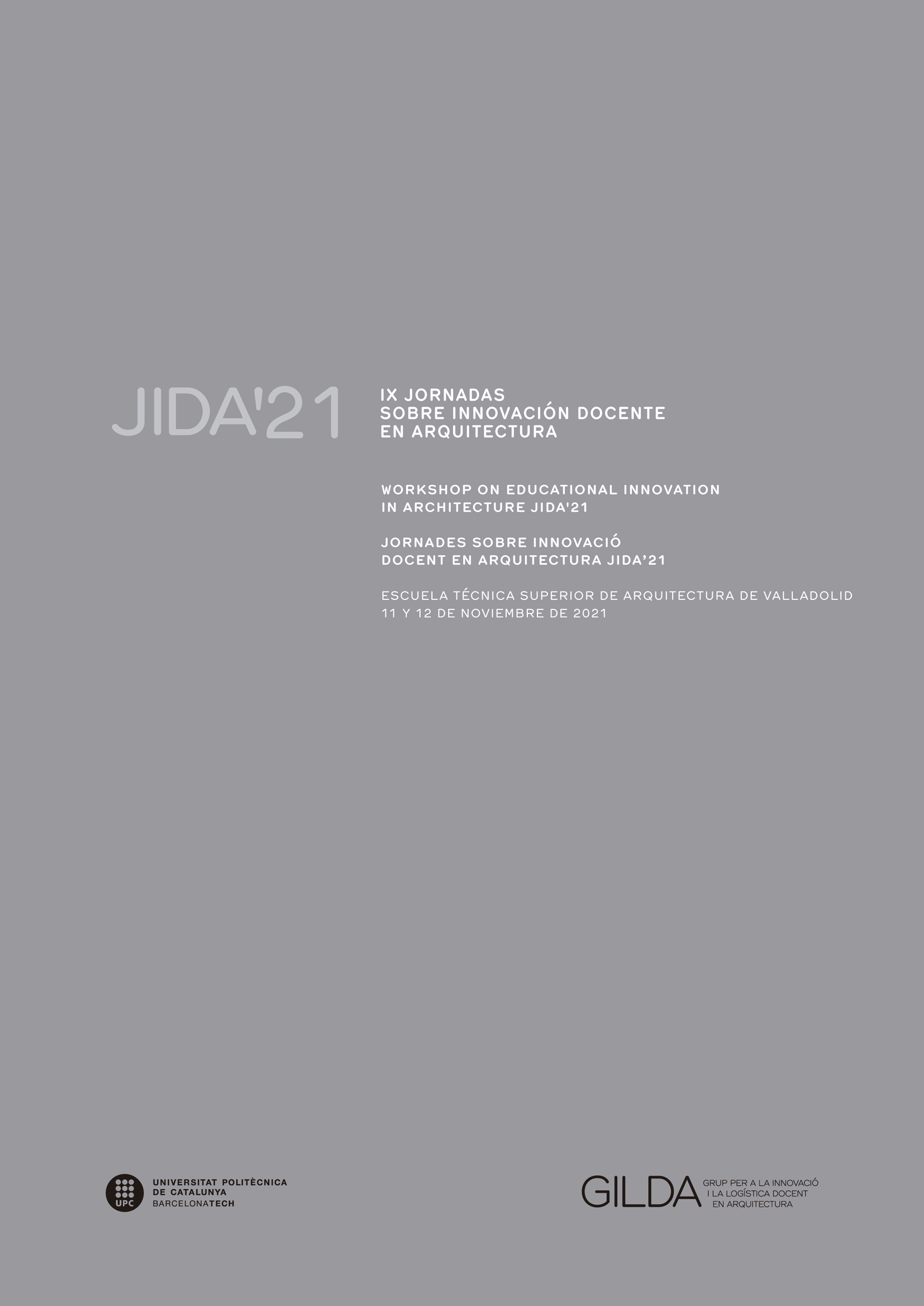Automata or autonomous? Emotional games for aligned and non-alienated empowerment
DOI:
https://doi.org/10.5821/jida.2021.10535Keywords:
Games, Ecology, Intuition, Energy, PsychologyAbstract
The pedagogy of the "contagion" of ecological and humanistic consciousness proposes to motivate to use our biology for decision-making according to ecological balance through neuroscientific tools applied to teaching. In a discipline such as architecture where complexity and rigor are combined with creativity and humanism, the focus on biology and the connection with nature from intuition allow an approach based on regenerative design, where it is incorporated into design. perceptual, sensory and emotional issues. The pedagogical challenge is based on a simulation with random conditions in relation to the human (humanistic approach) and the natural (biological approach), where the student is motivated and empowered to create a proposal from the connection with their own intuition more instinctive, from the phenomenology of perception and through play as a tool for connecting with the unconscious.
References
ASIMOV, I. (1979). El fenómeno “Eureka”. Artículos Científicos.Madrid. Editorial Bruguera.
BONVIN, J., MONTERCY, R. (2001). Église romaine: Chemin de lumière. Paris. Francia. Editorial Mosaique.
BRAVO, A. (2021). Colección de juegos de cartas de arquitectura. Siete recursos para iniciación, creatividad o experimentación avanzada. Estoa. Revista de la Facultad de Arquitectura y Urbanismo de la Universidad de Cuenca, 10(19), 115-125.doi: 10.18537/est.v010.n019.a10
CANDELA, F. (1962). Hacia una nueva filosofía de las estructuras. Buenos Aires, Argentina. Ed. Ediciones.
DISPENZA, J. (2019). “Rewired”. Youtube <https://www.youtube.com/watch?v=koc7r1Amf2I> [Consulta: 3 de septiembre de 2021]
FOGUÉ, U. (2021) “Las arquitecturas del fin del mundo”. Youtube <https://www.youtube.com/watch?v=qGl0thdCs2w> [Consulta: 3 de septiembre de 2021]
KANDEL, E. R. (2019, 1ªed.2013). La era del inconsciente. La exploración del in- consciente en el arte, la mente y el cerebro. Madrid. Editorial Paidós.
ITO, T. (1997).”Tarzanes en el bosque de los medios”. Revista 2G. Barcelona.
LANZA, R. (2012). Biocentrismo: la vida y la conciencia como claves para com prender la naturaleza del universo. Madrid. Editorial Sirio.
LIPTON, B. H. (2006). La biología de la creencia. La liberación del poder de la conciencia, la materia y los milagros. Madrid. Editorial La Esfera.
NEUTRA, R. (1958). Un Realismo Biológico: un nuevo renacimiento humanístico en Arquitectura. Buenos Aires. Editorial Nueva visión
RUIZ, A. (2020). Habitar en la Era del Inconsciente. 22 píldoras de conciencia para habitar de forma atípica en nuestra tierra. Madrid/Buenos Aires. Editorial CON Diseño.
SENTIERI OMARREMENTERIA, C.; NAVARRO BOSCH, A. (2017). “El aprendizaje de la arquitectura a través del juego”. A: Garcia Escudero, Daniel; Bardí Milà, Berta, eds. "V Jornadas sobre Innovación Docente en Arquitectura (JIDA'17), Escuela Técnica Superior de Arquitectura de Sevilla, 16 y 17 de Noviembre de 2017". Barcelona: UPC IDP; GILDA, 2017. Disponible en <http://hdl.handle.net/2117/109604> [Consulta: 3 de septiembre de 2021]
SHELDRAKE, R. (2019) “Why is Consciousness important?”. Youtube <https://www.youtube.com/watch?v=Og6HaH38Udc> [Consulta: 3 de septiembre de 2021]
SHELDRAKE, R. (1999) De perros que saben que sus amos están camino de casa y otras facultades inexplicables de los animales. Madrid. Editorial Paidós.
SHELDRAKE, R. (1995, 1ªed 2009). “A new science of life: Morphic resonance and the habits of nature”. The Ecology, Cosmos and Consciousness Salon. The Institute of Ecotechnics. October Gallery. Bloomsbury, London.






















